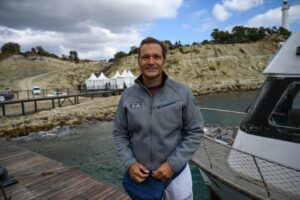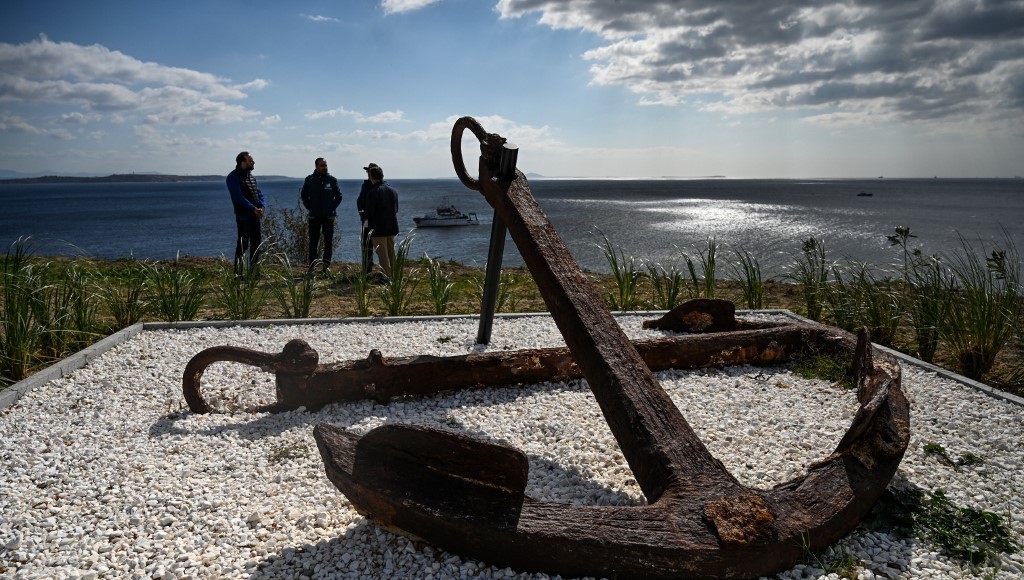Hulking hulls of mighty warships greet divers off Turkey’s western shore, testament to a World War I battle that gave birth to nations and is now an underwater museum.
The British Royal Navy’s “HMS Majestic” is just one of 14 shipwrecks at Gallipoli, a peninsula that has been the graveyard of navies stretching back to ancient times.
The last great battle for its adjoining Dardanelles Strait leading from the Mediterranean toward Russia was a fiasco for British and French forces, who beat a retreat after months of fighting that claimed tens of thousands of lives.
And while the Allies eventually won the war, their sacrifices in the 1915 battle were a touchstone moment in the formation of national consciousness in modern Turkey, Australia and New Zealand.
Now Turkey, where history and politics seem inextricably interlinked, is opening the site up to the world’s divers — just in time for the country’s centenary celebrations in 2023.
“It’s like a time machine that takes you back to 1915 and World War I,” says Savaş Karakaş, a diver and documentary maker who was one of the first to inspect the wrecks when they opened to the public this month.

“It’s a good opportunity for us to remember our past,” says professional underwater photographer Ethem Keskin of the wrecks, some lying just a few meters under the sea and others up to 80 meters.
“I thought about the moment they sank and you feel the stress of war.”
‘Emotional moment’
Turkey wants Gallipoli to be the new go-to destination for divers looking to connect with events that shaped the present world.
Other hotspots include the Chuuk Lagoon in Papua New Guinea — famous for its World War II wrecks — and the Bikini Atoll in the Marshall Islands, which still suffers the ills of US nuclear testing in the 1940s and 50s.
“Now Gallipoli is becoming an alternative,” Karakaş said. “This is history, and each shipwreck is like a medal on our chest.”
Allied troops waded ashore on the peninsula at the start of an ill-fated land campaign to wrest the Dardanelles from the Ottoman Empire, which was already in its dying throes.
The battle began on April 25, 1915, pitting Allied troops from France, Britain, Australia and New Zealand against the Ottomans and Germany.
The Allies intended to secure a supply route to Russia and capture Constantinople, as Istanbul was known when it was the capital of the Ottoman and Byzantine empires.
They gave up after nearly nine months of grueling warfare in which more than 100,000 were killed on all sides, according to different estimates.
April 25 is still honored as Anzac Day in Australia and New Zealand, whose joint Army Corps lost an estimated 11,000 lives in the campaign.
“I dived into the remains with an Australian: a shipwreck which may not mean much to us aroused his interest,” diving instructor Ercan Zeybek said.
“It was an emotional moment for him.”
‘Holding grandfather’s hand’
Access to the wrecks required a special permit until 2017, when Ismail Kaşdemir, who heads the area’s Çanakkale Historical Site, began pushing the idea of opening the seabed to the broader public.
“There was history and treasure lying underwater for more than 100 years,” he said. “The diving community was curious.”
Çanakkale already attracts global tourists intrigued by remnants of the legendary city of Troy, which rests on the Dardanelles’ eastern bank.
“You can already smell the history above the water,” Derya Can, who has set multiple free-diving records, told AFP at the underwater park’s unveiling.
“Now, divers will be able to survey the underwater history.”
For film maker Karakaş, this history is also personal since his name Savaş (meaning “war” in Turkish) honors the Gallipoli campaign, where his grandfather was wounded.
“His hand was burnt and I was very scared when I was a child. Each time he was trying to touch me… I was looking at his hand and feeling a little bit weird,” he recalled.
“When I dive, I remember this hand. The rusted steel feels like the hand burnt by shells from those ships, so it’s like holding my grandfather’s hand.”
AFP

